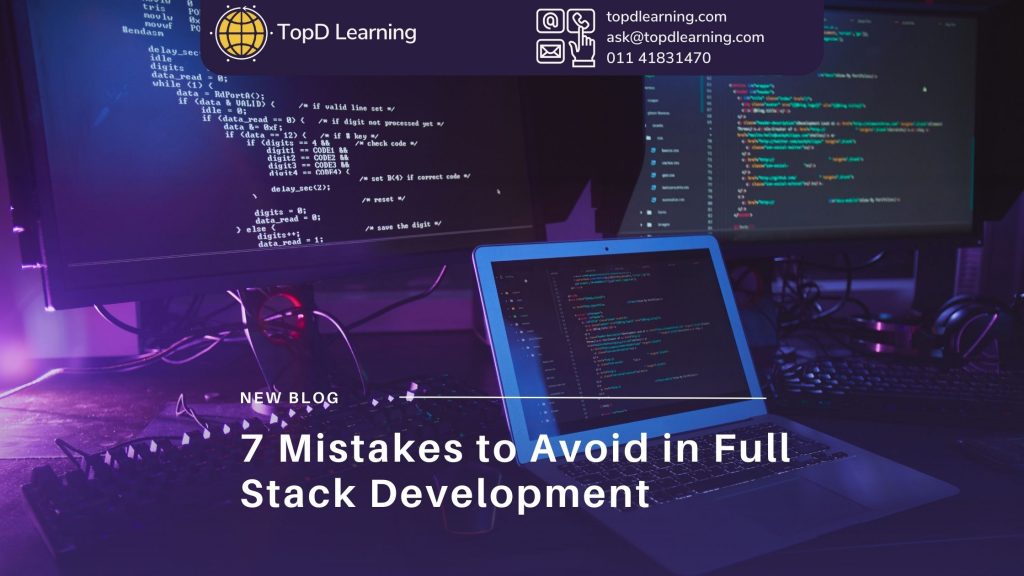Uncover the seven critical mistakes to avoid in full stack development to streamline your coding journey and enhance your project outcomes. Dive into our expert insights for a smarter development strategy.
Table of Contents:
- Introduction
- Ignoring Responsive Design Principles
- Overlooking Security Measures
- Neglecting SEO Best Practices
- Underestimating the Importance of Code Reviews
- Skipping Thorough Testing
- Not Staying Up-to-Date with New Technologies
- Disregarding Project Management Fundamentals
- Conclusion
Introduction:
Embarking on the journey of full stack development is akin to mastering the art of digital creation. It’s a path filled with challenges and learning curves that, when navigated correctly, leads to the creation of seamless, efficient, and impactful web applications. However, certain missteps can hinder progress and compromise the quality of your work. In this blog, we delve into the seven cardinal mistakes to avoid in full stack development, ensuring that your digital craftsmanship stands the test of time and technology.
#1: Ignoring Responsive Design Principles:
Responsive design is the cornerstone of modern web development. It ensures that your application adapts to the screen size and resolution of any device, providing an optimal user experience. Here’s why you should prioritize it:
- Fluid Grid Implementation: Use flexible grid layouts that adjust to the user’s viewing environment.
- Flexible Images and Media: Ensure that images and media queries are responsive and work in harmony with the fluid grid.
- Media Query Adaptation: Employ media queries to apply different styles for different devices, enhancing usability and design integrity.
By integrating these responsive design elements, developers can create applications that are both aesthetically pleasing and functionally robust across all devices.
#2: Overlooking Security Measures:
Security should never be an afterthought in full stack development. It’s essential to safeguard your application from potential threats. Here are key points to ensure your application’s security:
- Data Encryption: Implement SSL/TLS protocols to secure data in transit.
- Secure Authentication: Utilize multi-factor authentication and secure password policies.
- Regular Security Audits: Conduct vulnerability assessments and penetration testing to identify and mitigate risks.
Ensuring these security practices are in place is crucial for maintaining the integrity and trustworthiness of your applications.
#3: Neglecting SEO Best Practices:
SEO is crucial for the visibility and success of any web application. Here’s how you can optimize your full stack projects for search engines:
- Semantic HTML: Use HTML5 semantic elements to reinforce the meaning of the information in web pages and web applications.
- URL Structure: Create clean, descriptive URLs that are easily understandable by both users and search engines.
- Meta Tags Optimization: Ensure that meta descriptions, title tags, and header tags are effectively utilized to improve search ranking.
Incorporating these SEO strategies from the start can greatly enhance the discoverability of your web applications.
#4: Underestimating the Importance of Code Reviews:
Code reviews are not just about finding errors; they’re about improving code quality and fostering collaboration. Here’s how to make the most of them:
- Peer Review Sessions: Regularly engage with peers to review code for potential improvements.
- Automated Code Review Tools: Use tools to automate the review process for common issues and coding standards.
- Constructive Feedback Culture: Foster an environment where feedback is given constructively and received openly.
Creating a culture that values code review is essential for continuous improvement and learning within a development team.
#5: Skipping Thorough Testing:
Testing is a non-negotiable phase in the development cycle. It ensures the reliability and stability of your application. Here are the testing practices you should adopt:
- Unit Testing: Validate each piece of your code with unit tests to catch bugs early.
- Integration Testing: Check that different parts of the application work together as expected.
- User Acceptance Testing (UAT): Ensure the final product meets the requirements and is ready for deployment.
A thorough testing process is a hallmark of high-quality software and a practice that should never be compromised.
#6: Not Staying Up-to-Date with New Technologies:
The tech landscape is constantly evolving, and staying current is crucial. Here’s how you can keep up:
- Continuous Learning: Dedicate time to learning new languages, frameworks, and tools.
- Community Engagement: Participate in developer forums and attend webinars or meetups.
- Experimentation: Build side projects to experiment with and understand new technologies.
Keeping your skills sharp and current is an ongoing process that requires dedication and a proactive approach to learning.
#7: Disregarding Project Management Fundamentals:
Effective project management is the backbone of successful full stack development. Here are the fundamentals you should not overlook:
- Agile Methodologies: Embrace agile practices for flexible and efficient project management.
- Time Management: Prioritize tasks and manage your time effectively to meet deadlines.
- Communication: Maintain clear and consistent communication with stakeholders and team members.
Strong project management skills are essential for delivering projects on time and within scope, ensuring the satisfaction of clients and stakeholders.
Conclusion:
Avoiding these seven mistakes in full stack development is crucial for crafting high-quality, robust web applications. From responsive design to security, SEO, code reviews, testing, staying updated with technology, and project management, each aspect plays a significant role in the development process.
For those looking to further refine their full stack development skills and ensure they are equipped to avoid these common pitfalls, consider exploring the Full Stack Job Guarantee Program and other valuable training courses offered by TopD Learning. With a commitment to best practices and continuous learning, you can elevate your development projects and set yourself apart in the competitive tech industry.


